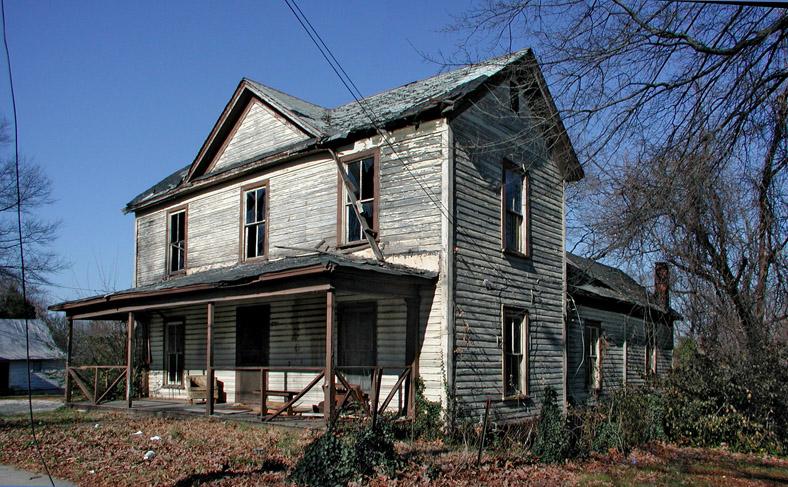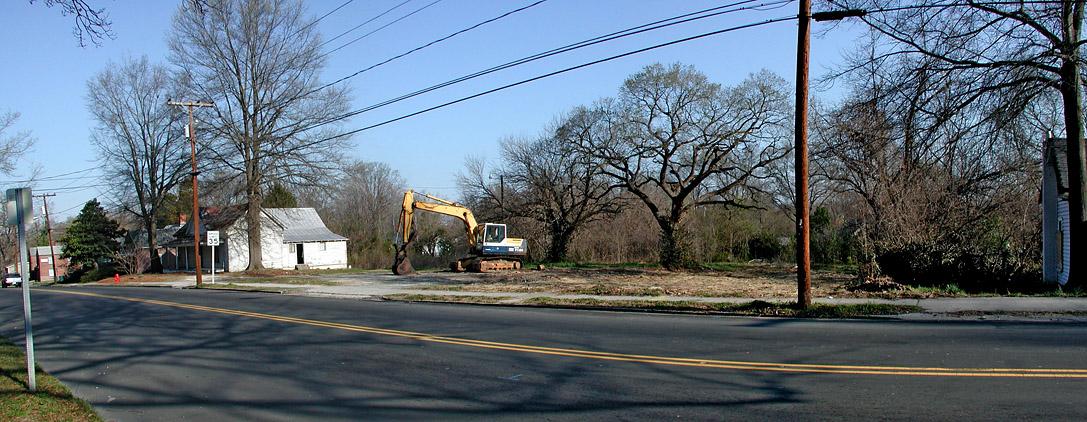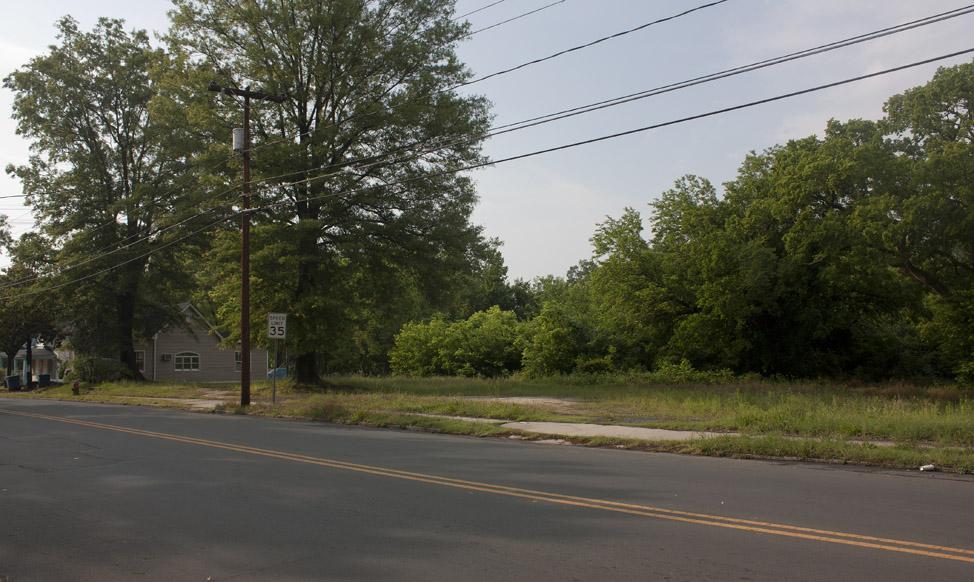Support OpenDurham.org
Preserve Durham's History with a Donation to Open Durham Today!
OpenDurham.org is dedicated to preserving and sharing the rich history of our community. Run by our parent nonprofit, Preservation Durham, the site requires routine maintenance and upgrades. We do not ask for support often (and you can check the box to "hide this message" in the future), but today, we're asking you to chip in with a donation toward annual maintenance of the site. Your support allows us to maintain this valuable resource, expand our archives, and keep the history of Durham accessible to everyone.
Every contribution, big or small, makes a difference and makes you a member of Preservation Durham. Help us keep Durham's history alive for future generations.




Comments
Submitted by Red Lady (not verified) on Mon, 6/13/2011 - 8:23pm
So much for the revitalization of Durham. I've never seen a city do so little with open space.
Submitted by Anonymous (not verified) on Mon, 6/13/2011 - 2:00am
Terrible! Though, to be fair, most likely the house was covered in lead paint, which is quite toxic.
Submitted by Red Lady (not verified) on Mon, 6/13/2011 - 2:00am
So much for the revitalization of Durham. I've never seen a city do so little with open space.
Submitted by Anonymous (not verified) on Mon, 6/13/2011 - 8:24pm
Terrible! Though, to be fair, most likely the house was covered in lead paint, which is quite toxic.
Submitted by Natalie (not verified) on Tue, 6/14/2011 - 8:25pm
and did the lead paint just magically disappear when the house was demolished?
Is there a lead paint fairy blessing East Durham with demolitions to rid the scurge of lead paint?
Submitted by John Martin (not verified) on Tue, 6/14/2011 - 2:00am
@Anon: Are you telling us that you're "confident" that they carefully scraped off all the lead paint and then removed the chips for special disposal? I'd like to know why you're confident. I've seen lots of houses get bulldozed in Durham, and I've never s
Submitted by Anonymous (not verified) on Tue, 6/14/2011 - 2:00am
Guys, I'm confident that appropriate lead abatement measures were followed during demolition (unlike when the house was abandoned and lead chips were most likely drifting all over the neighborhood).
Submitted by Rob Gillespie (not verified) on Tue, 6/14/2011 - 8:26pm
I'd rather have lead paint professionally removed by a containment crew than thrown into a dump that can possibly drain to a water source.
Submitted by David Jeffreys (not verified) on Tue, 6/14/2011 - 2:00am
I'm sure that a lot of that lead paint was pulverized into lead paint dust for the breathing enjoyment of all passers-by. Just another bad AIR day. PS: My word verification is "exylar" -- the new name for lead paint dust!
Submitted by David Jeffreys (not verified) on Tue, 6/14/2011 - 8:26pm
I'm sure that a lot of that lead paint was pulverized into lead paint dust for the breathing enjoyment of all passers-by. Just another bad AIR day.
PS: My word verification is "exylar" -- the new name for lead paint dust!
Submitted by Rob Gillespie (not verified) on Tue, 6/14/2011 - 2:00am
I'd rather have lead paint professionally removed by a containment crew than thrown into a dump that can possibly drain to a water source.
Submitted by Anonymous (not verified) on Tue, 6/14/2011 - 8:27pm
Guys, I'm confident that appropriate lead abatement measures were followed during demolition (unlike when the house was abandoned and lead chips were most likely drifting all over the neighborhood).
Submitted by Natalie (not verified) on Tue, 6/14/2011 - 2:00am
and did the lead paint just magically disappear when the house was demolished? Is there a lead paint fairy blessing East Durham with demolitions to rid the scurge of lead paint?
Submitted by John Martin (not verified) on Tue, 6/14/2011 - 8:28pm
@Anon:
Are you telling us that you're "confident" that they carefully scraped off all the lead paint and then removed the chips for special disposal? I'd like to know why you're confident. I've seen lots of houses get bulldozed in Durham, and I've never seen anything like that happen. The bulldozers come in, knock down the house, throw the debris in the backs of trucks and haul it off to the landfill.
Environmentally sensitive, it ain't.
Submitted by Anonymous (not verified) on Tue, 6/14/2011 - 8:29pm
Yes; new lead hazard management rules were introduced in 2010 which require certified contractors to follow specific practices to prevent lead contamination.
Submitted by John Martin (not verified) on Wed, 6/15/2011 - 2:00am
@Anon There is nothing on the demolition permit that talks about lead or lead paint. RACM refers to asbestos.
Submitted by Natalie (not verified) on Wed, 6/15/2011 - 8:30pm
Certified contractors following specific practises...
HA! This is the best laugh I've had in a little while.
Have you ever looked at the demolition permit or process required by the city?
Submitted by Anonymous (not verified) on Wed, 6/15/2011 - 2:00am
That owner from the 50's sounds familiar. Frederick Stell? Fred Stell sounds like a guy in the real estate business around Durham back in the early 90's when I first got started. Not a common last name so it could be he or his family. Seth Roberts
Submitted by John Martin (not verified) on Wed, 6/15/2011 - 8:30pm
@Anon
These houses were demolished before 2010 so no such requirements were in place.
As Natalie says, I wouldn't bet a lot on people following those rules after 2010. The EPA can make rules, but it's rather like DOT setting speed limits on highways: enforcement is an entirely different matter.
Submitted by Anonymous (not verified) on Wed, 6/15/2011 - 2:00am
Durham City-County demolition permit requires NC HHCU permit for removal of RACM, including use of accredited workers, supervising air monitor, abatement designer, and transport of waste to an approved landfill.
Submitted by Anonymous (not verified) on Wed, 6/15/2011 - 8:31pm
Durham City-County demolition permit requires NC HHCU permit for removal of RACM, including use of accredited workers, supervising air monitor, abatement designer, and transport of waste to an approved landfill.
Submitted by John Martin (not verified) on Wed, 6/15/2011 - 2:00am
@Anon These houses were demolished before 2010 so no such requirements were in place. As Natalie says, I wouldn't bet a lot on people following those rules after 2010. The EPA can make rules, but it's rather like DOT setting speed limits on highways: enfo
Submitted by Anonymous (not verified) on Wed, 6/15/2011 - 8:32pm
That owner from the 50's sounds familiar. Frederick Stell? Fred Stell sounds like a guy in the real estate business around Durham back in the early 90's when I first got started.
Not a common last name so it could be he or his family.
Seth Roberts
Submitted by Natalie (not verified) on Wed, 6/15/2011 - 2:00am
Certified contractors following specific practises... HA! This is the best laugh I've had in a little while. Have you ever looked at the demolition permit or process required by the city?
Submitted by John Martin (not verified) on Wed, 6/15/2011 - 8:33pm
@Anon
There is nothing on the demolition permit that talks about lead or lead paint. RACM refers to asbestos.
Submitted by Anonymous (not verified) on Wed, 6/15/2011 - 2:00am
Yes; new lead hazard management rules were introduced in 2010 which require certified contractors to follow specific practices to prevent lead contamination.
Submitted by Anonymous (not verified) on Thu, 6/16/2011 - 8:34pm
Regardless of lead and asbestos, the house was a fire hazard and most likely structurally unsafe. Some may miss it, but the city can't allow something to exist that's going to be a danger.
Submitted by David Jeffreys (not verified) on Thu, 6/16/2011 - 2:00am
Well, anonymous (& just who are you, hiding behind the "anonymous" tag), just why are you reading this blog??? It's about preservation!!! Take the old structually unsound fire hazard, and return it to its glory days of beauty. Happens all the time, even in Durham. That why Gary writes and shows this stuff. Ask John Martin about his home that was in such disrepair, torn in half, moved across town, and now is the model of beauty that outshines even its original existence. If you are ready to just accept demolition of Durham's homes, you need not be reading this blog! You are in the wrong place!
Submitted by David Jeffreys (not verified) on Thu, 6/16/2011 - 8:34pm
Well, anonymous (& just who are you, hiding behind the "anonymous" tag), just why are you reading this blog??? It's about preservation!!! Take the old structually unsound fire hazard, and return it to its glory days of beauty.
Happens all the time, even in Durham. That why Gary writes and shows this stuff. Ask John Martin about his home that was in such disrepair, torn in half, moved across town, and now is the model of beauty that outshines even its original existence.
If you are ready to just accept demolition of Durham's homes, you need not be reading this blog! You are in the wrong place!
Submitted by Anonymous (not verified) on Thu, 6/16/2011 - 2:00am
Regardless of lead and asbestos, the house was a fire hazard and most likely structurally unsafe. Some may miss it, but the city can't allow something to exist that's going to be a danger.
Submitted by Ari aka Anonymous (not verified) on Sun, 6/19/2011 - 2:00am
This house has already been demolished, but even if it wasn't, why would I want to "take the old structurally unsound fire hazard, and return it to its glory days of beauty"? It was a pretty ordinary house to begin with, and I don't have time or interest for such a project (obviously no one else did either...)
Submitted by Renee (not verified) on Sat, 6/25/2011 - 2:00am
The thing I can never fathom -- and it's truly a rhetoric comment since there is no one answer -- is how so MUCH of Durham gets in that decrepit condition to have to be torn or fall down. A lot of the places Gary has shown us over the years seem like victims of willful neglect. Oh, I don't believe for a minute that any one gave a second thought about lead paint or it's disposal when blading the place. Until municipalities start showing concern for the environment in their building practices, I honestly can't believe they are going to show any in their demolition practices regardless of what they put on paper.
Add new comment
Log in or register to post comments.